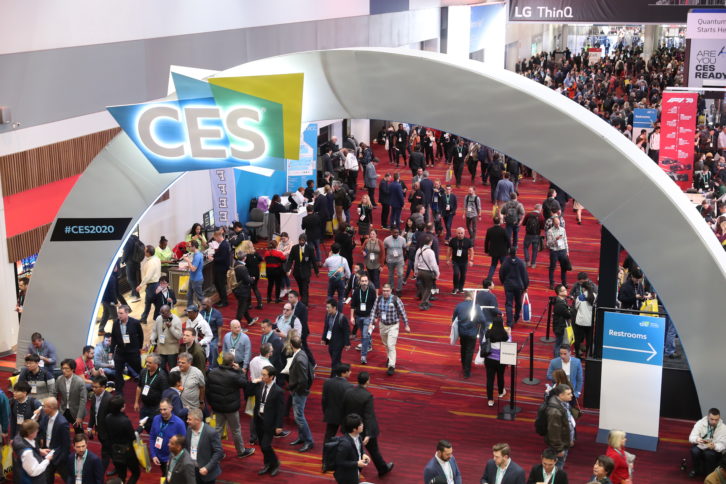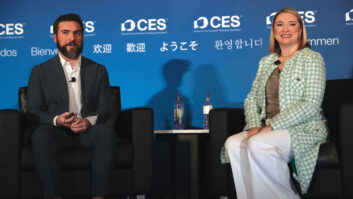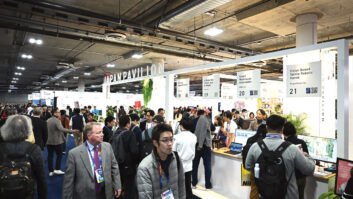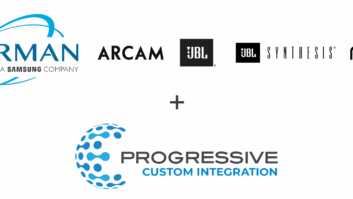
I believe this year was the 15th Consumer Electronics Show (CES) that I have attended. That gives me quite a bit of perspective, having seen the show — and our industry — change, grow, and evolve over the years. Typically, when I get back from the show, the most common question people ask is, “What was the best thing you saw?” And for the first time in years, I find myself struggling to come up with any real standout product.
I would mostly describe this show as being more evolutionary rather than revolutionary, with no real product in our sector standing out as being any real gamechanger.
However, a few things did catch my eye during my week in Vegas, and I thought I’d distill the show down to the top five things that I think will have the most impact on our channel. (Remember, the show is huge, and if I missed a trend or product you think will be important, please let me know about it by tweeting @ResiSys!)
1. Micro LED Coming…Eventually
I think the Micro LED display category is one of the most exciting things to come to home/commercial video in a while. Being able to build a display of almost any size, shape, and aspect with small tiles that can be easily transported, carried, and deployed into any environment will offer numerous options for both resi and commercial jobs. When I first saw Samsung’s Wall and Sony’s (ugh) CLEDIS on display at CES a few years ago, I knew this was going to be the future of large video display technology. Featuring deep blacks, vibrant colors, tons of light output, massive contrast, and no visible seams between tiles, all without any of the drawbacks of front projection, who wouldn’t want this? At this year’s show, Sony, Samsung, LG, Konka, and TCL all had Micro LED technology on display in their booths, showing that the technology is gaining wider support. Unfortunately, the prices are still nowhere near real world, and even beyond what many in the “premium luxury” market would consider. For example, the 236-inch model on display in the Konka booth was said to cost “more than $1.5 Million.” While this might be the future of large display technology, the future isn’t as close as we might hope…yet.
2. TVs Continue Improving
There’s no question CES has been a “video show” for years, where the major video companies fill the Central Hall of the Las Vegas Convention Center will massive booths and get the majority of the news coverage. And while there might not have been a single breakthrough product, there were certainly plenty of evolutionary developments that will be coming in next generation displays. First, look for far more 8K offerings that incorporate HDMI 2.1 technology. And while these will still be flagship offerings commanding premium pricing, there will be options and prices that will entice luxury buyers. Another trend is for displays getting even thinner bezels. Similar to designs of modern smartphones, look for more screen and less of everything else. Black levels continue plunging and contrast continues rising as displays get more active local dimming zones and the ability to pump out more nits for truly astonishing HDR playback. Look for OLED to come to lower sizes (sub 50-inch) and be available from companies other than Sony and LG (i.e., Vizio, Konka, and Philips). Finally, TV manufacturers finally seem to be embracing the fact that their sound sucks, with both Sony and Samsung discussing and demonstrating superior audio performance in certain models.
3. Smart Things are Everywhere
Recently CES has been increasingly filled with AR, VR, drones, robots, and 3D printers. But another trend in recent years is for the lower-floor of the Sands Expo Convention Center to be the place to see the majority of smart home and connected devices. This year practically the entire Sands, as well as entire separate area known as Eureka Park, was packed with all manner of smart door locks, door cams, sensors, hubs, baby care, wearables, fitness trackers, and more from companies literally all over the world.
There were things running the gamut of “smart” technology from a smart drill that uses lasers to accurately measure and track how deep a hole you’re making, to sleep trackers, to calorie and fat trackers, to luggage that automatically follows you, to smart sexual…umm…insertables. (Feel free to use your imagination.) Voice control is broadening to the vehicle space where the new Lamborghini Huracan Evo will let you use Alexa to adjust in-vehicle settings such as temperature, seat heating, and lighting color. What this means is that the public’s awareness will continue increasing, as will the proliferation of available equipment. Of course, most of it will not be designed to work together — or with professionally installed systems — and that users will need help navigating these waters and getting systems set up, working, and integrated correctly.
On the CI front, I saw a couple of cool things that stood out. One was by a startup named Oval that is launching a five-in-one sensor that bundles motion, temperature, water, light, and humidity sensing into a small and affordable package. These battery powered sensors are expected to cost about $50/each and will offer a ton of sensing that can be integrated into systems to trigger a variety of events. Another company, Flex Automation, demonstrated a bridge that will enable you to connect any Z-Wave device to a Control4 system. This would open a ton of integration options for Control4 dealers and users, letting them choose from a plethora of Z-Wave devices to best fit their installs.
4. Audio is Virtually Non-Existent
At my first CES, audio was nearly as much a part of the show as video. Back then, high-end audio manufacturers took over an offsite hotel at Alexis Park, where virtually every room and suite at the hotel was rented by a company showing one six-figure system after another. Then several years ago, all of those high-end audio companies moved to the upper floors of the Venetian. This was far more convenient for attendees and, once you developed a system (i.e., take the express elevator to the 34th floor, visit every suite, and then take the fire stairway down each floor until you get to the 29th and had seen everything), it made it easy to visit everyone in a day. However, the number of audio manufacturers exhibiting has been rapidly dwindling over the years, and this year it reached a pitiful new low, with just a handful of exhibitors displaying audio. Among the faithful were Sound United (Polk Audio and Definitive Technology), Pioneer/Onkyo, SVS Audio, Lenbrook (Bluesound, NAD, PSB, Dali), Sennheiser, and Golden Ear (with new parent AudioQuest). Harman Electronics continued its tradition of showing offsite at the Hard Rock Hotel, with several exciting new products from Mark Levinson and JBL. (For a great retrospective on CES Audio past, read this remembrance post written by Sandy Gross.)
Among mainstream companies, soundbars were by far the big audio news with many offering models with improved audio and enhanced Dolby Atmos surround performance. Among those showing new line-ups were LG (with models incorporating design and DSP by Meridian), Samsung, Klipsch, JBL, Vizio, and TCL. Another common feature of all new bars is HDMI 2.1 with eARC support.
5. Improving Source Material
While there was no word (at least that I heard) about any plans for 8K sources, there was some news on the source front that will bring improved video quality with it. First, IMAX Enhanced finally seems to be getting ready for prime time. The company was displaying in a prime location, in space that used to be opposite Intel. The company announced it now has 17 device partners, along with four worldwide streaming partners, including FandangoNow and Sony’s Privilege 4K here in the U.S. It also announced that all 4K Blu-ray titles from Sony going forward will be IMAX Enhanced, giving another reason to sell physical media players.
In other news, the Ultra HD Alliance announced more manufacturers, directors, and guilds coming on board to support “Filmmaker Mode,” which is designed to preserve the creative intent for the way the movie was intended to be viewed by automatically disabling all video processing features in the display (i.e., the dreaded motion smoothing), preserving the correct aspect ratio and frame rate, setting the correct D65 color point, and disabling any noise reduction or added sharpness. LG and Vizio both announced that every 2020 model will support Filmmaker Mode, with Panasonic supporting the mode on all 2000-series OLED panels, and Samsung and Phillips also offering the mode on certain models. Kaleidescape also announced support for the new feature.
Nearly 20 directors have voiced support for Filmmaker Mode, including James Cameron, Martin Scorsese, JJ Abrams, Ryan Coogler, Christoper Nolan, Ang Lee, and others. Further, the Directors Guild of America, the American Society of Cinematographers, the International Cinematographers Guild, and The Film Foundation also formally recognized the new TV picture mode as an important and critical step toward allowing home viewers to enjoy film and television shows as they were intended to be seen by the filmmaker.
Finally, NEXTGEN TV, powered by ATSC 3.0, had numerous announcements at the show and appears that it will actually be coming to TVs this year, with more than 20 ATSC 3.0 capable sets having been announced by a variety of manufacturers (Sony, LG, Samsung) for release this year.
All this means better quality video, which will hopefully mean customers wanting to upgrade their TVs!
Check out the Residential Systems CES 2020 hub for more show news and information.







